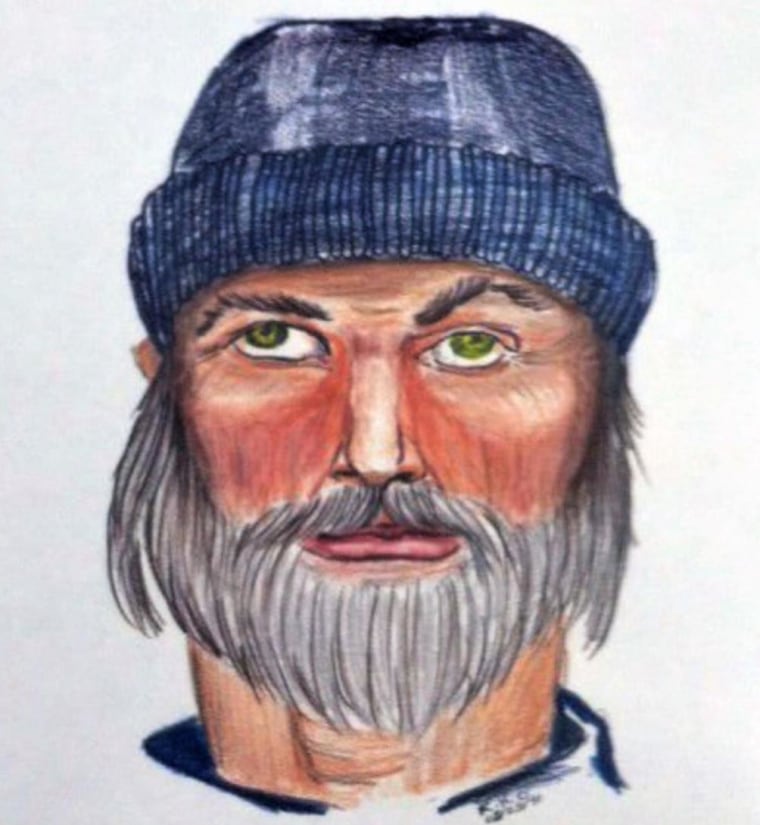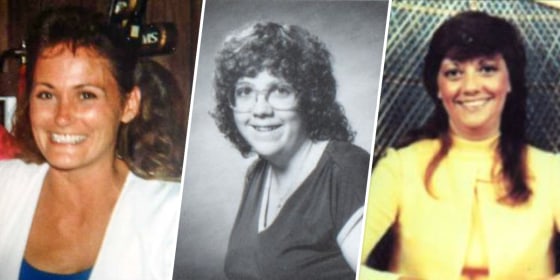The identity of a man believed to be the “I-65 killer” and the “Days Inn killer,” so-called because he targeted women who worked at hotels along the Midwest highway in the late 1980s, was revealed Tuesday.
Harry Edward Greenwell was identified as the man suspected of raping and killing three women and attacking another who got away, Indiana State Police, the FBI and Elizabethtown, Kentucky, authorities said at a joint news conference. Officials believe he may have had more victims.
For more than three decades, the killer of Vicki Heath, Margaret "Peggy" Gill and Jeanne Gilbert remained a mystery.
However, it is too late for the victim's families to see him prosecuted. Greenwell died in January 2013 at age 68, Indiana State Police Sgt. Glen Fifield said at the news conference.
The murders unfolded in Indiana and Kentucky.

It all started on Feb. 21, 1987, with the murder of Vicki Heath, who was working the night shift at a Super 8 hotel in Elizabethtown, Kentucky, when she was sexually assaulted and shot in the head, police said.
Two years later, on March 3, 1989, Indiana State Police investigated two homicides that occurred the same day, authorities said at the news conference.
Margaret Gill was killed while she was working the night shift at a Days Inn in Merrillville. Jeanne Gilbert was also working the night shift at a Days Inn in Remington when she was killed, Fifield said.
Police preserved DNA evidence and ballistic evidence from all three cases.
The man is believed to have then struck again on Jan. 2, 1990, attacking a clerk working at a Days Inn in Columbus, Indiana, in a similar fashion. That woman, who was not publicly identified, was able to escape, Fifield said.
She was the key lead in the case for police, providing a detailed description of the suspect and details of the crime.
"She is the only known victim to have survived the vicious, brutal attacks of this killer," Fifield said at the news conference.
She described him as a man with green eyes and a lazy right eye, NBC affiliate WTHR of Indianapolis reported.
Patterns rose quickly in the attacks — all of the victims worked at hotels and all were sexually assaulted and robbed, and all attacks unfolded along the I-65 corridor, which runs from Gary, Indiana, to Mobile, Alabama.
Then came the evidence.
Ballistic evidence from the scenes of the Gill and Gilbert murders matched, meaning they were most likely killed by the same suspect, Fifield said. The Indiana State Police Laboratory later matched DNA evidence linking the Heath and Gilbert murders to the Columbus, Indiana, case, Fifield said.
In 2019, the FBI’s Gang Response Investigative Team was asked to help, bringing fresh eyes to the case. At the same time, technology had advanced, Fifield said, giving investigators new ways to approach the murders.

One of the methods officials used was investigative genealogy — the use of DNA analysis, genealogy research and historical records to search for leads.
Further investigation and lab testing of evidence by the Indiana State Laboratory led to a positively identified suspect — Greenwell — with a 99.9999 percent positive match.
"It is this scientific breakthrough that ultimately led to the identification of the I-65 killer Harry Edward Greenwell," Fifield said. "Greenwell had an extensive criminal history and had been in and out of prison."
Fifield noted that Greenwell had escaped from jail twice and was known to travel frequently in the Midwest.
Police said they do not know the official cause of his death. They noted that an obituary for him said he died of cancer.
The investigation isn't over.
"Investigators have long believed that there have been rapes, murders, robberies or assaults that have not yet been connected to this investigation," Fifield said.
Kim Gilbert Wright, Jeanne Gilbert’s daughter, said at the news conference that the announcement her family had been aching to hear for three decades was “overwhelming.”
“In our case we’ll never know what the killer was thinking. We’ll never know the ‘why’s' of his actions,” she said.
She recounted her last memories of her mother.
“I told everyone I remember her last words … ‘I love you, I’ll see you tomorrow.’ I didn’t see her that tomorrow, but I see her every day. I see her in me. I see her in my brother. I see her in my family."
